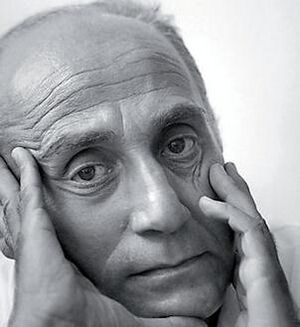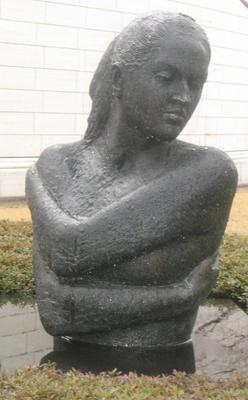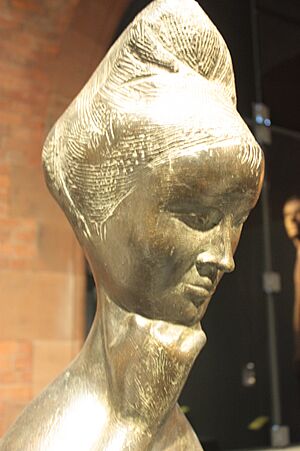Emilio Greco facts for kids
Quick facts for kids
Emilio Greco
|
|
|---|---|
 |
|
| Born | 11 October 1913 Catania, Sicily, Italy
|
| Died | 4 April 1995 (aged 81) Rome, Italy
|
| Nationality | Italian |
| Known for | sculpture |
Emilio Greco (born October 11, 1913 – died April 4, 1995) was a famous Italian artist. He was a sculptor, which means he made statues. He also created engravings, medals, wrote stories, and even poetry! Greco is most famous for his large bronze sculptures. You can find his amazing artworks in museums all over the world. Some are in London, Saint Petersburg, Lisbon, and even New Zealand!
Contents
About Emilio Greco
Emilio Greco was born in Catania, a city in Sicily, Italy. When he was in his early twenties, he moved to Rome. There, he joined the army and served in Albania.
After World War II ended, Greco opened his own art studio in 1947. He quickly became well-known. In 1958, he had his first solo art show in Rome. The next year, he had another show in Munich, Germany.
Famous Exhibitions
Greco's art was shown in many important places around the world.
- In 1961, his sculptures were displayed at the Musée Rodin in Paris, France. He also had a show in Tokyo, Japan.
- His art was seen in Paris again in 1962, and in Lisbon, Portugal, and Rome, Italy, in 1963.
- In 1966, his works traveled to Australia, shown in Melbourne and South Australia.
- Later, in 1972, his art went on a big tour in Japan. It was shown in Osaka, Kobe, Yamaguchi, Hiroshima, Kyoto, and Mitsukoshi.
Museums Dedicated to Greco
Several museums celebrate Emilio Greco's work.
- In 1991, the Museo Emilio Greco opened in Orvieto, Italy. It holds many of his main artworks.
- Since 1992, the Museo Nazionale d'Abruzzo in L'Aquila, Italy, has a special room just for Greco's art.
- In 2013, to celebrate 100 years since his birth, special exhibitions were held. These took place in London, Rome, and Chieti, Italy.
Emilio Greco passed away in Rome, Italy.
Greco's Amazing Artworks
Greco became famous all over the world for his sculptures. He also received important jobs to create art for public spaces.
Notable Sculptures
Some of his most famous works include:
- The Monument to Pinocchio (1953) in Collodi, Italy. This sculpture is a tribute to the famous wooden puppet.
- The huge bronze doors for Orvieto Cathedral (1962–1964). These doors are a major part of the cathedral's entrance.
- Nereid (also called Crouching Figure No.4), created in 1973. A large version of "Nereid" can be seen in London, England.
Greco's Artistic Style
Greco's sculptures often have a refined look. They feature long, graceful shapes, a style popular in Italy long ago. His drawing for the Pinocchio monument are kept at the Tate Gallery in London.
In 1956, his sculpture La grande bagnante ("Large Bather") won a top prize. This happened at the 18th Venice Biennale, a very important art exhibition. His sculpture Laura (1973) is a great example of his art from later in his career. Interestingly, his work was even part of the art competition at the 1948 Summer Olympics in 1948!
Greco's Writing
Emilio Greco was not only a sculptor but also a writer and poet. In 1980, he published a book called "Lo Jonio Corrusco Di Vento." This book was a collection of his short stories and poems. He even drew the pictures for the book himself!
Selected Works
- Seated wrestler, 1947.
- Monument to Pinocchio, 1953.
- Anna, 1954.
- Large Bather No. 1, Bronze, 1956, Tate.
- Bather No. 2, 1956–57.
- Eiko, 1968, Matsuoka Museum of Art.
- "Estrellita", Bronze, 1972, Museo Greco, Orvieto.
- Laura, Bronze, 1973, Hiroshima Museum of Art.
- Nereid (Crouching Figure No.4), 1973.
- Bullfight, 1979.



